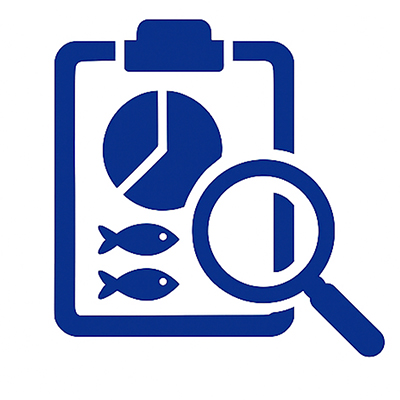
Sharks, skates and rays: Relevant legislation

Many UK shark, skate and ray species are subject to strict protections or best-practice handling guidelines — with several species illegal to retain and all best released alive.
Sharks, Skates & Rays (UK Recreational Angling)
Legal Protections and Retention Restrictions
While not all species are protected by law, a number of UK elasmobranchs (sharks, skates and rays) are either fully protected, strongly advised against retention, or subject to MCRS and best-practice handling rules. Here’s an overview:
Species Illegal to Retain (Recreational or Commercial)
Under Schedule 5 of the Wildlife and Countryside Act 1981 and retention bans under UK fisheries legislation, the following must be released immediately if caught:
Common Skate (Dipturus batis species complex)
White Skate (Rostroraja alba)
Angel Shark (Squatina squatina)
Porbeagle Shark (Lamna nasus) – retention banned in UK recreational fishing
Note: Identification is essential, for example, “common skate” actually refers to two species: Dipturus intermedius and Dipturus flossada, both of which are protected (blue skate and flapper skate).
Minimum Sizes and Handling Advice (Where Retention is Legal)
For certain species that can legally be retained (e.g. thornback ray, small-eyed ray), some IFCAs and fisheries agencies set Minimum Conservation Reference Sizes (MCRS) — often around 45–50cm (wing length) depending on region.
However, best practice is now strongly moving toward full catch and release for all large elasmobranchs due to their slow growth, late maturity, and low reproductive rates.
Best Practices for Handling and Release
Anglers are expected to exercise care when targeting or incidentally catching sharks, rays or skates. The following should be standard practice:
Use barbless or crimped hooks, and where possible, circle hooks to reduce deep hooking
For deep-hooked fish, cut the trace close to the mouth — do not attempt to remove the hook if it risks injury
Handle fish with wet, gloved hands or a wet towel to protect the skin and mucus layer
If photographing, support the body properly, never hold by the gills, tail or spiracles
Avoid keeping rays on hot decks or in direct sunlight for prolonged periods
Do not weigh fish vertically, use a sling scale or estimate from length/width using conversion charts
Return the fish quickly and gently, supporting it in the water until it swims away strongly.
- In the case of larger sharks, do not remove them from the water.
Targeting vs. Accidental Capture
Anglers are permitted to target and retain certain non-protected species like:
Thornback ray
Small-eyed ray
Blonde ray
Bull huss
Smoothhound
Targeting is presently still permitted for protected species (like common skate or porbeagle) strictly under catch and release. Though there are many debates over whether stronger protections are required.
Conservation Context
Many UK shark, skate and ray species are classified as vulnerable, endangered or critically endangered by the IUCN. Because these fish are long-lived, produce few offspring, and are often slow to recover from overfishing, they are especially sensitive to pressure from both commercial and recreational sectors.
With increasing focus on sustainable angling, recreational fishers are expected to follow code-of-conduct guidelines whether or not legal protections apply. Best handling infographics are available form the Shark Trust.
Our Services

Marine Planning - Angler Engagement and Consultancy:
Helping marine licence applicants secure stakeholder support by meaningfully engaging the UK’s recreational sea angling community.

Dedicated Consultation Representation & Advocacy:
Professional consultation responses that give coastal communities and interest groups a stronger voice in marine decision-making.

Angling Market Integration & Product Development:
Helping marine brands and events successfully connect with the UK’s thriving recreational sea angling sector.


YourAnglingVoice is a trading name of National Fishing Voucher, company number: 15931819.Registered address: 27 Jasmine Way, Weston-super-mare, BS24 7JW